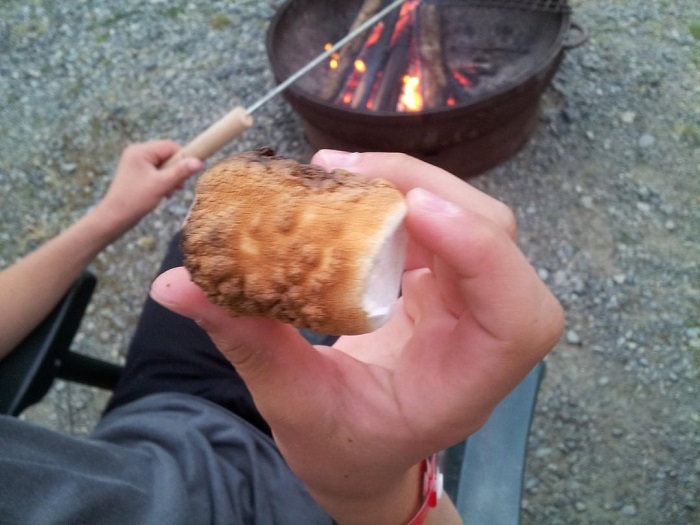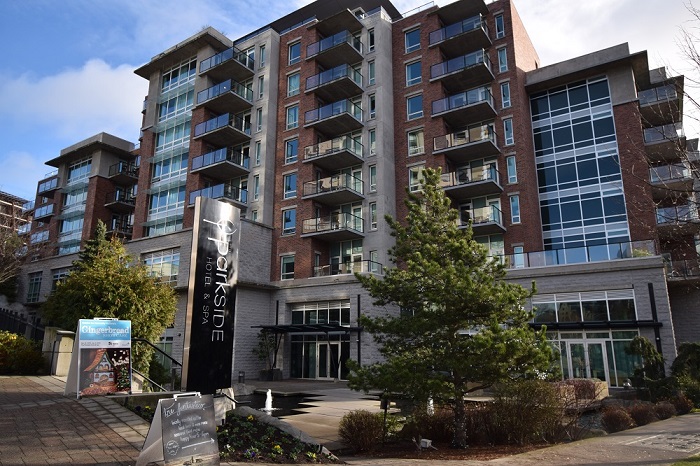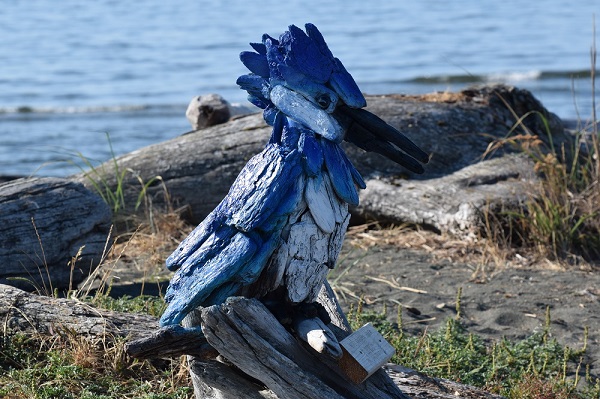- Victoria
- Money
Money in Canada: Loonies and Toonies, oh my!
Before your great Canadian adventure, you probably have questions about money in Canada. Planning a trip takes a lot of work and your money is kind of a big deal.
Disclaimer: I receive a small commission from some of the links on this page.
I've got answers to the most common questions I get about money in Canada:
- What does money in Canada look like and what are the denominations
- What is penny rounding and how does it affect you
- How much tax is charged in Victoria
- How much will you spend in a day in Victoria
- How much cash should you bring to Victoria
- What credit cards are accepted
- Where you can convert into Canadian dollars (and if that is even necessary)
- Where you can find ATMs in Victoria
What does Canadian money look like and what are the denominations?
Money in Canada is a mixture of colourful bills and coins. The most common denominations of bills are:
- Five ($5) – blue in colour
- Ten ($10) – purple in colour (may be either a landscape or horizontal design)
- Twenty ($20) – green in colour
- Fifty ($50) – red in colour
- One Hundred ($100) – brown in colour
For more images of Canadian currency, visit Bank of Canada
It is important to note that many smaller shops do not accept $100 dollar bills – partly because of the amount of change they would have to provide but mostly because of the higher risk of counterfeit bills. Some shops also extend this same policy to $50 dollar bills as well, so if you’re going to use cash while you’re here, be sure to have some smaller bills on hand. NOTE: To mitigate the concern of germ transfer when handling cash, many businesses now prefer you use a cashless payment (debit or credit).
All currency less than $5 is in the form of coins:
- 0.05 – nickel
- 0.10 – dime
- 0.25 – quarter
- 1.00 – one dollar which is affectionately known as a “Loonie” due to the Loon embossed on the coin
- 2.00 – two dollars which was introduced after the Loonie and it became known as the “Twoonie” because it is has a value of two loonies (of course!)
What is penny rounding and how does it affect you?
Maybe you noticed that money in Canada does not include a penny. As of February 2013, the Canadian Mint stopped distributing pennies and we transitioned to penny rounding for cash purchases. The final purchase price of your item determines whether any rounding occurs and by how much. See below.
The caveat is, that penny rounding only takes place on cash purchases. Transactions using electronic transfer (credit card or debit card) do not require any rounding. You will be billed exactly what the final purchase price was.
How much tax is charged in Victoria?
Canada-wide we pay a tax on most everything deemed as goods and services in the amount of 5% of purchase price. Additionally, we pay 7% provincial sales tax in the Province of British Columbia (provincial sales tax amounts vary from province to province). As a result of these two taxes, you should expect to pay 12% tax on top of the displayed retail price. Generally, groceries are not taxed. Other taxes that may be levied include a hotel room tax (sometimes referred to as a destination tax) and 15% liquor tax (instead of 12%).
How much will you spend in a day in Victoria?
If you will be eating at modest restaurants in downtown Victoria you can expect to spend $10-$15 for breakfast, $10-$20 for lunch and $18-$35 for dinner. These prices are for meals only and you should add about $3 to $10 for beverages. Of course, there are ways to spend less and there are plenty of ways to spend way more! Other than food, you may have transportation costs ($5 for a public transit day pass), entrance fees for attractions and souvenirs. Check Viator to compare costs of some of our most popular activities and attractions.
How much cash should you bring to Victoria?
In my opinion…very little! Seriously, cash is not necessary any more because pretty much every place you go will accept a debit or credit card. In fact due to COVID-19 everyone prefers if you make cashless purchases now. If you do like to have some cash in your pocket, I personally don’t believe you need any more than $100 CDN. Speaking of your wallet though, although crime is relatively low in Canada, it still happens. We recommend you use an RFID wallet or use blocking sleeves and consider carrying an anti-theft travel bag like this sling style one.
What credit cards are accepted?
The main credit cards accepted in Victoria are the same ones accepted world-wide – MasterCard and Visa. Although American Express and Discover Card may be accepted at limited locations, you will definitely need one of the two main ones if you plan to use credit for most purchases.
Where can you convert currency into Canadian dollars
And is that even necessary?
The two most popular places to convert your currency in Victoria are Calforex Currency Exchange located at 606 Humboldt Street and FX Connectors Currency Exchange which has a year-round location at 106-1208 Wharf Street and a seasonal location at the cruise ship terminal.
Other places to change your money in Canada include all the major banks.
But, is it even necessary to convert your currency?
If you are travelling with USD, almost every shop and attraction will accept the money without converting to Canadian. Some will give you face value but most will have a conversion rate posted. Shops that do accept USD for payment usually set the rate for the season and it does not fluctuate with the bank rates.
Where can you find ATMs in Victoria?
When it’s time to get more money in Canada, using one of the many ATMs around town is one of the easiest ways. Every bank in Victoria has an ATM associated with it and these are your best bet for withdrawing cash. Other ATMs are located in places such as variety stores, restaurants and kiosks on the street. I recommend reading the fine print when using any ATM so you are aware of the various fees that may be charged with each withdrawal.
You may also like:
Recent Articles
-
Vancouver Island Wildlife Viewing Times and Locations
Sep 16, 24 06:42 PM
Discover the best times and places to see wildlife in their natural habitat with our Vancouver Island Wildlife Viewing guide. -
Private Campgrounds on Vancouver Island
Aug 13, 24 05:23 PM
Your one-stop listing of all private campgrounds on Vancouver Island. -
Where to Stay in Victoria, BC: A Comprehensive Guide
Jul 10, 24 12:42 PM
Choosing the right place to stay can significantly enhance your experience. This guide provides tips and ideas to help you decide where to stay in Victoria.









